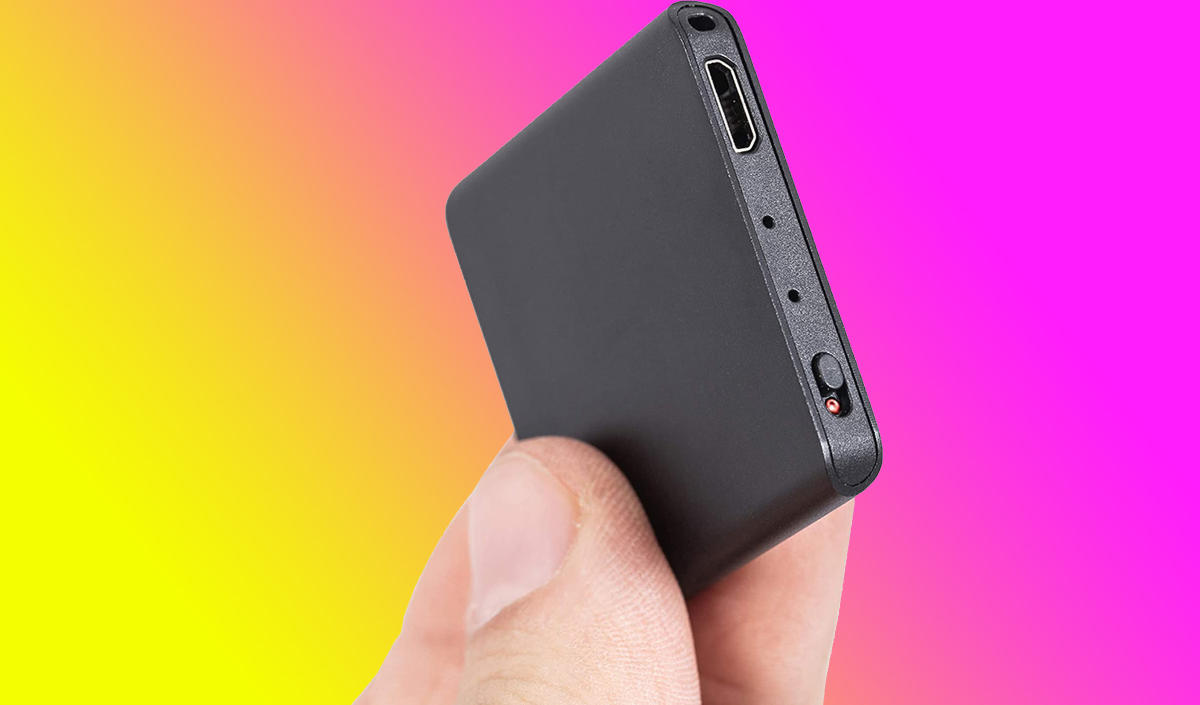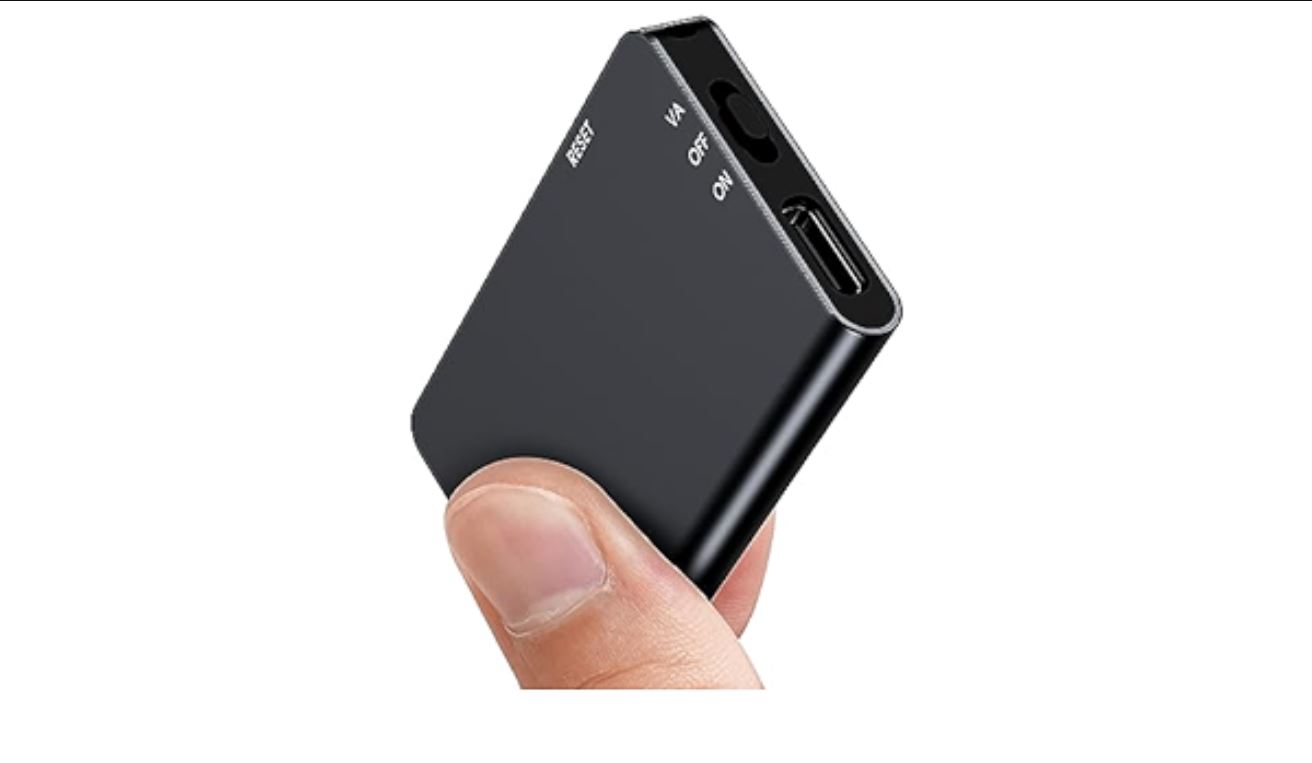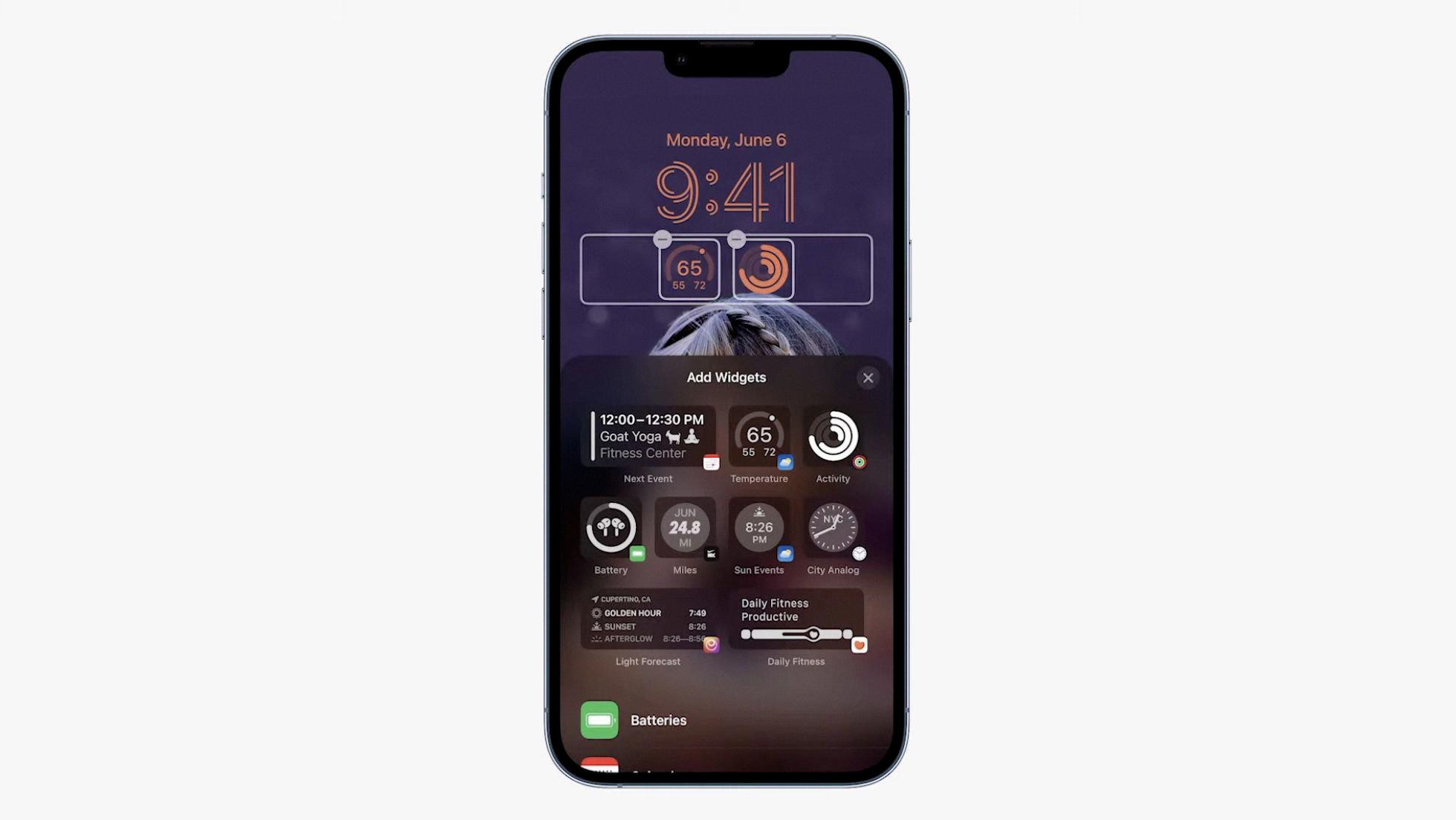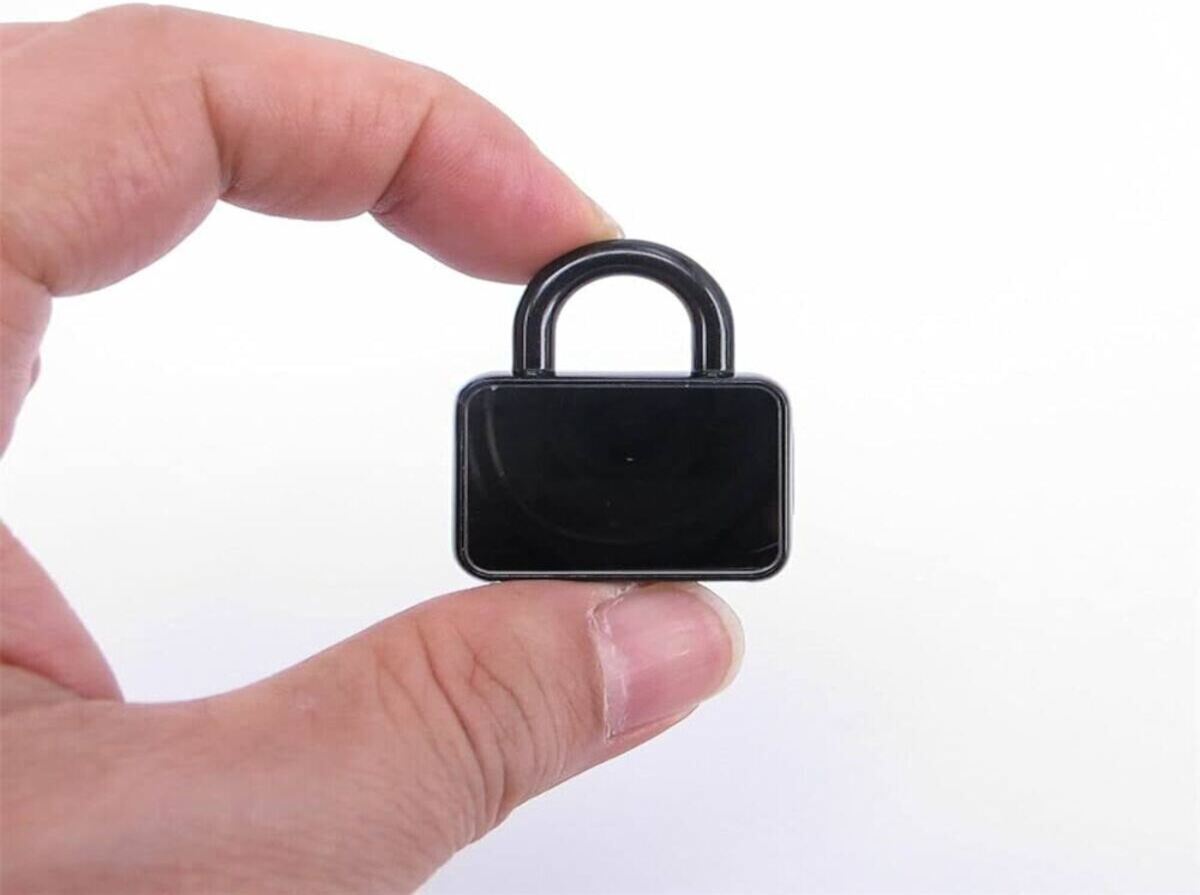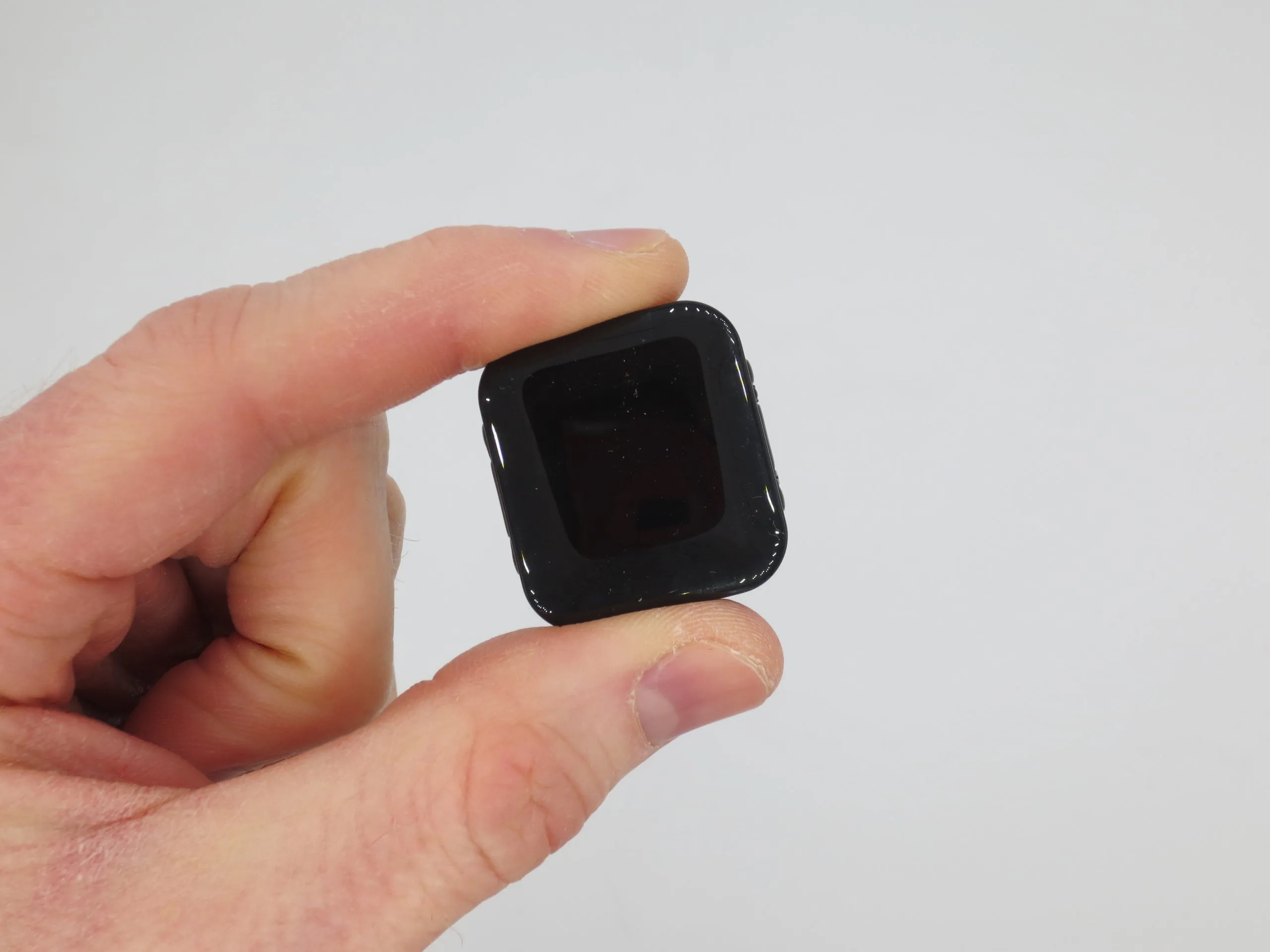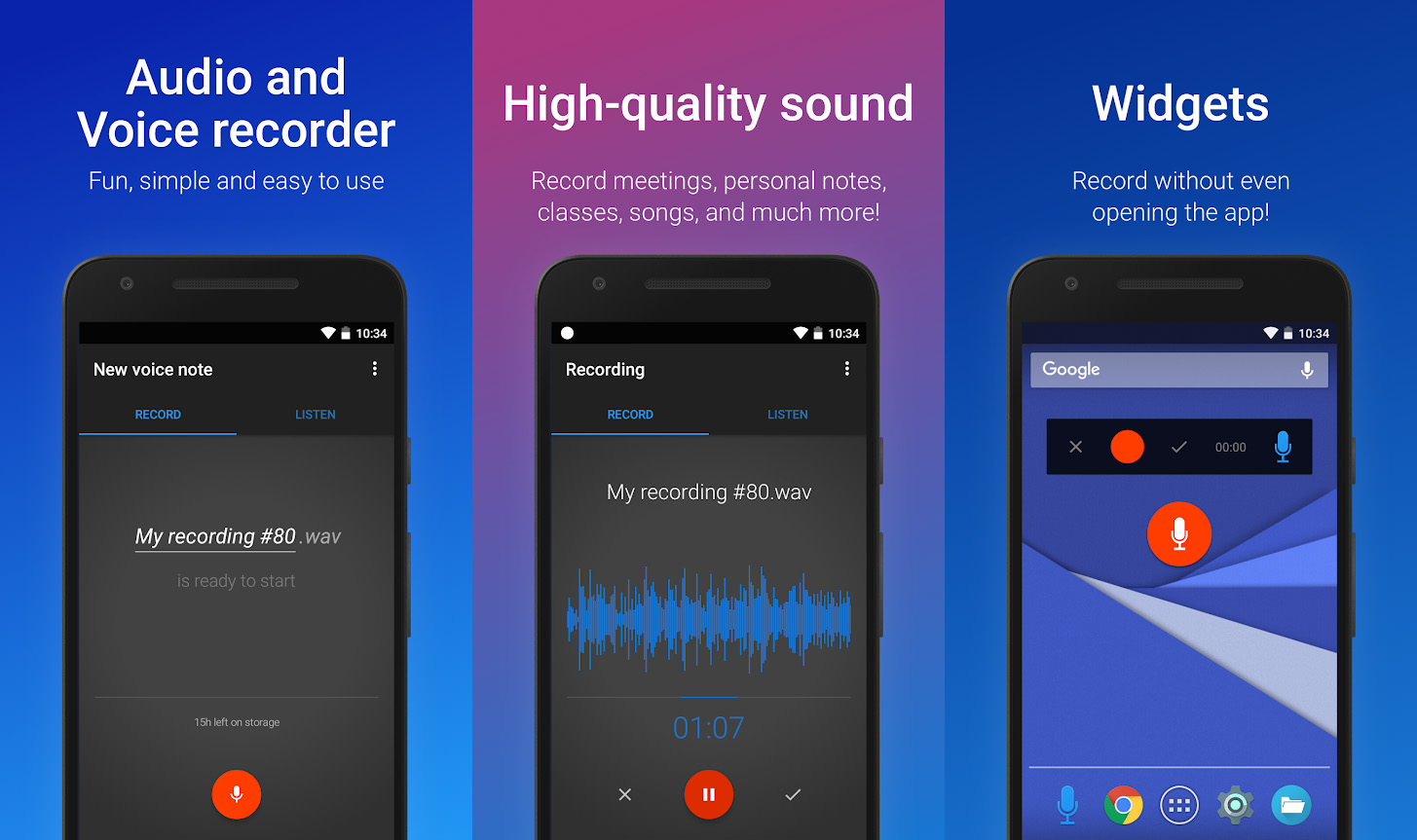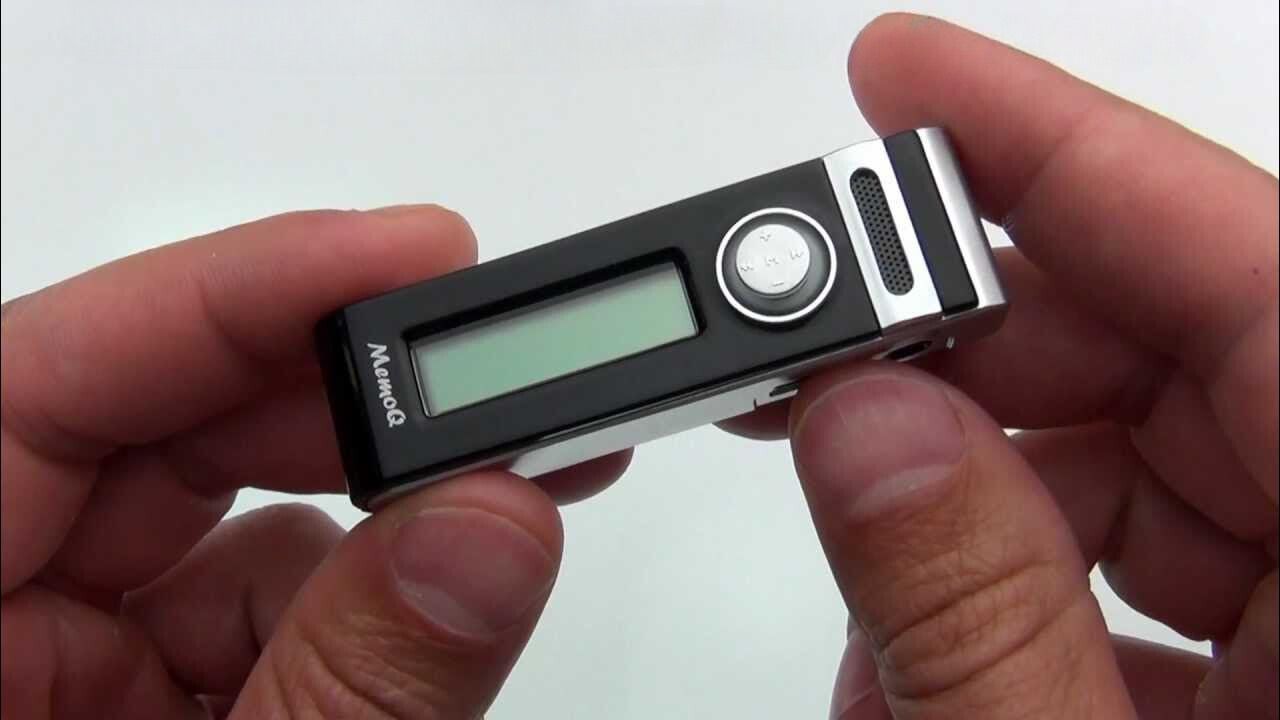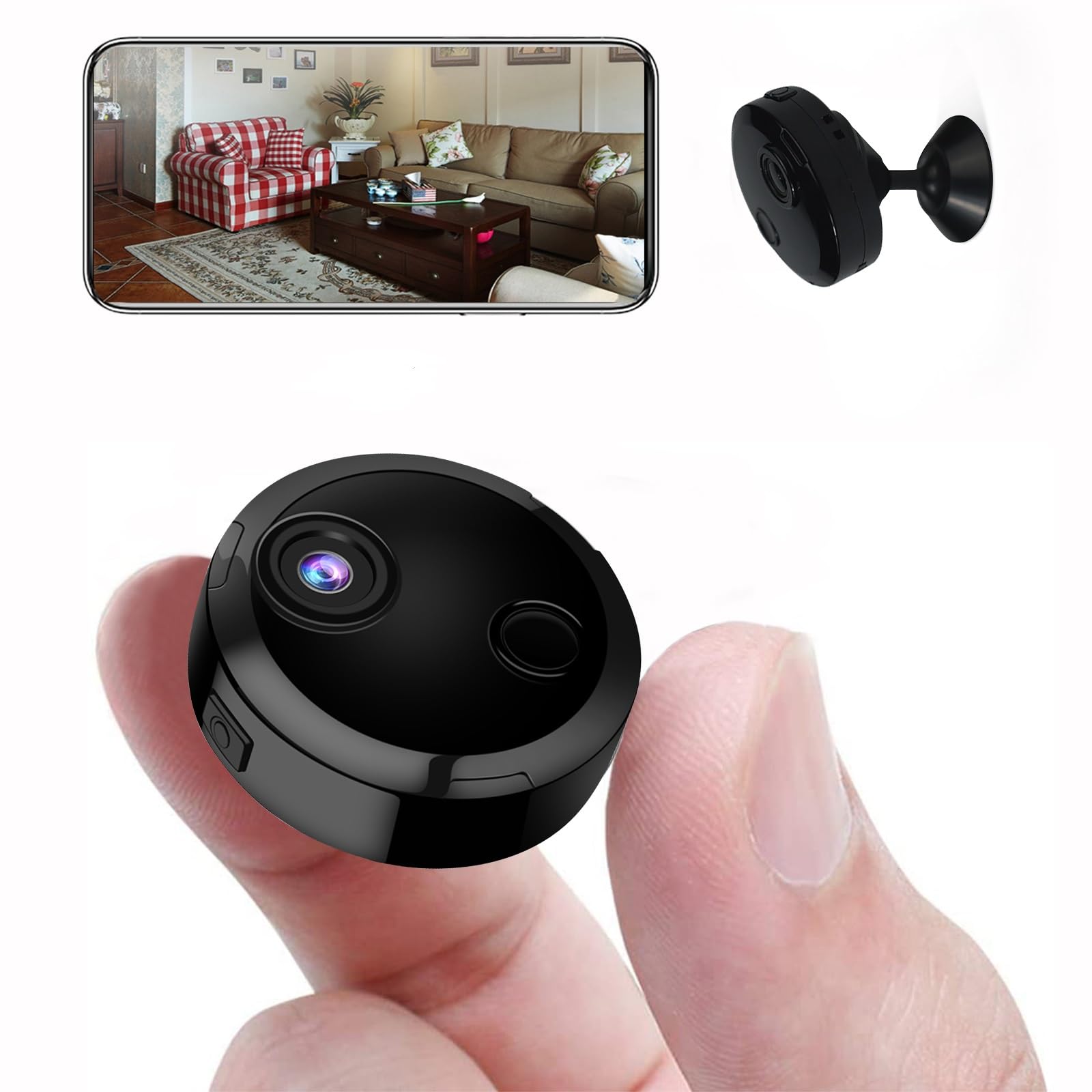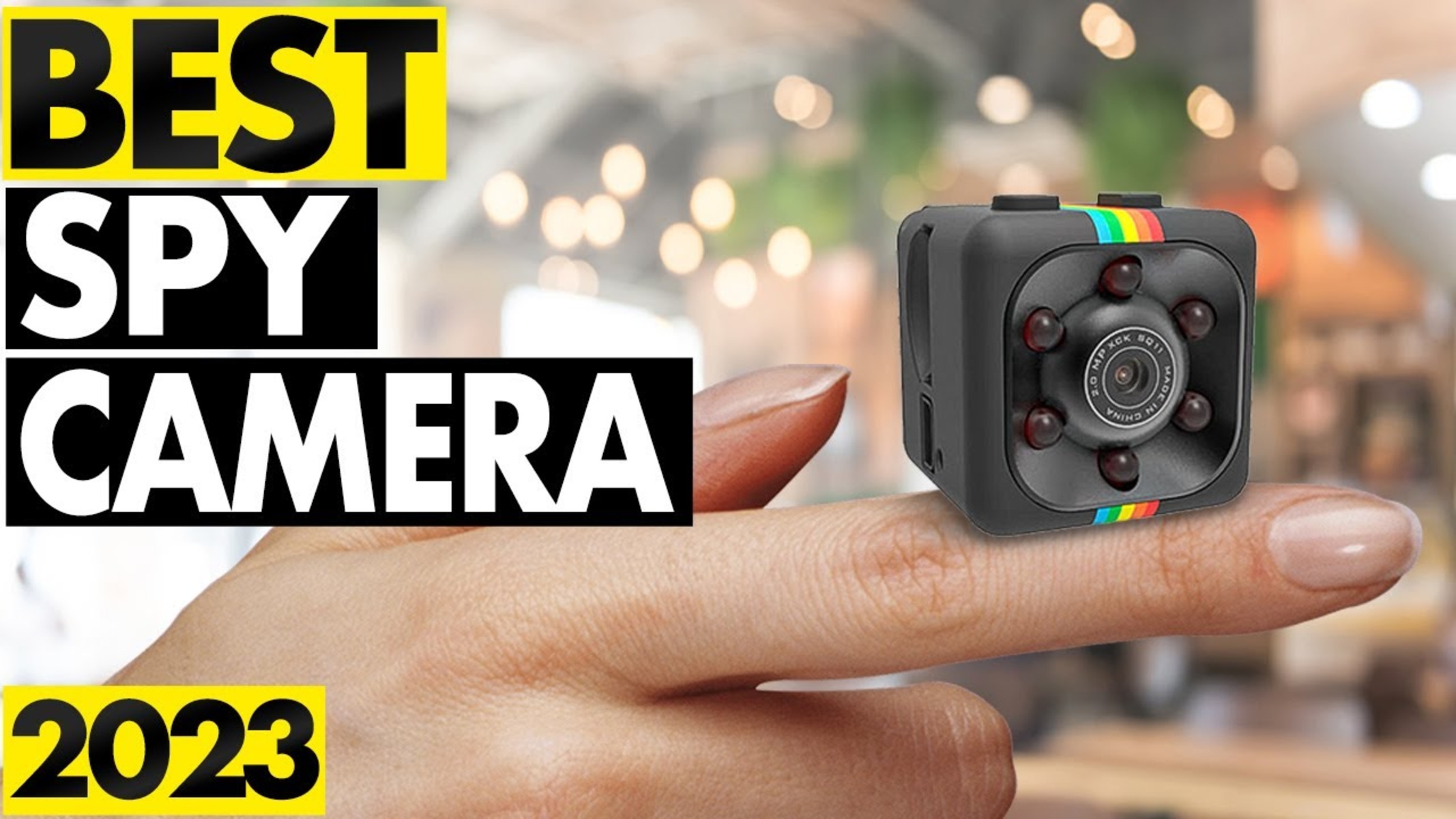Introduction
Welcome to our guide on how to find hidden voice recorders. With the advancement of technology, it has become easier than ever for someone to secretly record conversations. Whether it’s for personal reasons, surveillance, or even malicious intent, hidden voice recorders have become a major concern in today’s world.
Being unaware of the presence of a voice recorder can be a violation of privacy and potentially compromise sensitive information. That’s why it’s essential to understand the different types of voice recorders and know how to detect them.
In this comprehensive guide, we will walk you through the process of finding hidden voice recorders. You will learn about the common uses of these devices, as well as practical tips and techniques to locate them. By following our advice, you will be equipped with the knowledge to protect your privacy and safeguard confidential conversations.
Before we delve into the details, it’s crucial to note that finding hidden voice recorders may also involve legal implications. It is important to ensure you are following the laws and regulations of your country or state. Consulting with legal professionals, such as privacy experts or attorneys, can provide you with the necessary guidance in navigating this process.
That being said, let’s begin our journey into the world of hidden voice recorders and discover how to identify and locate them effectively.
Understanding Voice Recorders
Before we dive into the methods of finding hidden voice recorders, it’s important to have a basic understanding of how these devices work. Voice recorders, also known as audio recorders or dictaphones, are electronic devices used to capture and store sound.
There are various types of voice recorders available on the market, ranging from compact handheld devices to sophisticated microphones. These recorders can be categorized based on their storage capacity, recording quality, and additional features they offer.
Digital voice recorders, which have gained popularity in recent years, record sound digitally using a built-in microphone. They store audio files as digital data on internal memory or external storage devices, such as memory cards or USB drives. These recorders are compact, easy to use, and offer high-quality recordings.
Analog voice recorders, on the other hand, record sound mechanically using magnetic tape cassettes. While this type of recorder is less common today, it is essential to be aware of its existence, especially when searching for hidden recording devices.
Some voice recorders are designed to be discreet and easily concealable. They may be disguised as everyday objects like pens, USB drives, or even inconspicuous pieces of furniture. These hidden voice recorders can be particularly challenging to uncover, as they blend seamlessly into the environment.
Understanding the different types and capabilities of voice recorders will assist you in identifying potential hiding spots and selecting the most appropriate detection techniques. It’s important to keep in mind that the size, shape, and features of hidden voice recorders can vary greatly, making it all the more necessary to be well-informed.
Now that we have a basic understanding of voice recorders, let’s move on to exploring the common ways these devices are used.
Common Uses of Hidden Voice Recorders
Hidden voice recorders can serve a multitude of purposes, both lawful and unlawful. Understanding these common uses will help you identify potential scenarios where you may encounter hidden recording devices. While some uses may be legitimate and within legal boundaries, others may infringe upon personal privacy or even be illegal.
One common use of hidden voice recorders is for surveillance purposes. This could include monitoring employees at workplaces, investigating potential infidelity in relationships, or gathering evidence for legal proceedings. In these cases, the intention behind using hidden voice recorders may be to uncover truth, maintain security, or protect one’s rights.
Law enforcement agencies may also use hidden voice recorders as part of their investigative techniques. These devices can be essential tools in gathering evidence, conducting covert operations, or capturing incriminating conversations. It’s important to note that the use of hidden voice recorders by law enforcement agencies is strictly regulated and requires proper authorization.
Another common use is for journalists or investigators who may need to discreetly record interviews, conversations, or important interactions. This allows them to accurately document information or gather evidence while maintaining anonymity or protecting sources.
However, it’s crucial to be aware that hidden voice recorders can also be employed for unlawful activities. They may be used for espionage, blackmail, or invasion of privacy. Individuals with malicious intent may use them to gather sensitive information, obtain personal details, or compromise security.
It’s important to emphasize that the use of hidden voice recorders without consent is generally considered a violation of privacy and may be illegal in many jurisdictions. As a responsible individual, it’s necessary to respect the privacy rights of others and ensure that you are using voice recorders within the limits of the law.
Now that we are aware of the various uses of hidden voice recorders, let’s move on to the practical tips for finding these devices and protecting our privacy.
Tips for Finding Hidden Voice Recorders
Discovering hidden voice recorders requires a combination of keen observation skills, knowledge of common hiding spots, and the use of sophisticated detection devices. Here are some practical tips to help you in your efforts to find hidden voice recorders:
- Visual Inspection: Start by carefully inspecting the area or room where you suspect a hidden voice recorder may be present. Look for any unusual or out-of-place objects that could potentially conceal a recording device.
- Check Common Hiding Spots: Familiarize yourself with common hiding spots for hidden voice recorders, such as behind wall-mounted frames, inside electrical outlets, in air vents, or even disguised as ordinary objects like pens, clocks, or smoke detectors. Pay close attention to these areas during your inspection.
- Use Professional Detection Devices: Utilize specialized detection devices designed to locate hidden recording devices. These devices can detect radio frequencies, magnetic fields, or even infrared signals emitted by voice recorders. Investing in a professional detection device can greatly increase your chances of finding hidden voice recorders.
- Look for Suspicious Wires or Objects: Examine the room for any suspicious wires, cables, or objects that don’t seem to have a clear purpose. Hidden voice recorders often require power or connectivity, so be vigilant for any unusual wiring or Bluetooth devices that could be indicators of a hidden recording device.
- Consider Hiring a Professional: If you have reason to believe that a hidden voice recorder is present but are unsure about conducting the search yourself, it may be wise to seek assistance from a professional. These experts have the experience and equipment to effectively detect and locate hidden recording devices.
Remember, while it is important to be proactive in protecting your privacy, always ensure that you are adhering to the laws and regulations of your jurisdiction when conducting searches for hidden voice recorders. It is also crucial to respect the privacy of others and not use these detection techniques to invade their personal space or violate their rights.
By following these tips and employing a combination of visual inspections, knowledge of common hiding spots, and the use of professional detection devices, you can significantly increase your chances of locating hidden voice recorders and safeguarding your privacy.
Visual Inspection
One of the primary methods for finding hidden voice recorders is through a visual inspection of the area or room suspected of containing the hidden device. Although it may seem straightforward, a thorough visual inspection can provide valuable clues that could lead to the discovery of a hidden voice recorder.
Here are some key points to consider when conducting a visual inspection:
- Observe unusual objects: Carefully scan the room for any objects that appear out of place or seem odd in their positioning. Hidden voice recorders are often designed to blend seamlessly into the environment, so look for objects that wouldn’t typically be located in that area.
- Check for alterations: Pay close attention to any modifications or alterations made to the room. Look for new nail holes, fresh paint, or other signs of recent changes that could indicate an attempt to hide a voice recorder.
- Examine common hiding spots: Focus on known hiding spots for hidden voice recorders. Check behind wall-mounted frames, inside electrical outlets, under furniture, or in ceiling tiles. Inspect any objects that could potentially conceal a voice recorder, such as plants, decorative items, or electronic devices.
- Look for LED indicators: Some hidden voice recorders have LED indicators that could give away their presence. These indicators may be small and easily overlooked, so carefully examine electronic devices for any unusual lights or indicators that are not typically associated with that device.
- Consider audio quality: Keep in mind that hidden voice recorders require a clear line of sound to capture conversations effectively. Look for objects or devices that could potentially obstruct or enhance audio quality, such as unusual speakers, microphones, or soundproofing materials.
Remember to approach the visual inspection process with a critical eye and be meticulous in your observations. It can be helpful to take photographs or notes as you conduct the inspection to document any suspicious findings.
While a visual inspection can be an effective method for detecting hidden voice recorders, it’s important to note that some devices may be small, well-concealed, or disguised as everyday objects, making them challenging to identify with a visual examination alone. In such cases, additional methods, such as utilizing professional detection devices, may be necessary.
Now that we have covered the first method of visual inspection, let’s move on to exploring the next technique: checking common hiding spots.
Check Common Hiding Spots
When searching for hidden voice recorders, it’s essential to be familiar with common hiding spots where these devices are often concealed. Knowing where to look can significantly increase your chances of locating a hidden voice recorder.
Here are some common hiding spots to check:
- Electrical outlets: Hidden voice recorders can be disguised and hidden inside electrical outlets. Carefully inspect outlets for any inconsistencies, such as unusual wiring or bulges behind the faceplate.
- Furniture: Concealing a voice recorder within or behind furniture is a common tactic. Check seams, crevices, and underneath furniture for any signs of hidden devices.
- Wall-mounted frames: Frames on the wall provide a great hiding spot for voice recorders. Examine the area behind frames, especially if they are located near points of interest, such as desks or meeting areas.
- Air vents: Air vents offer an inconspicuous place to hide voice recorders. Inspect vents thoroughly, looking for any unusual objects or devices lodged inside.
- Clocks and other electronic devices: Clocks, radios, speakers, and other electronic devices can be modified to hide voice recorders. Pay close attention to these objects for any signs of tampering or unusual wiring.
- Plants and decorative items: Voice recorders may be concealed within potted plants or disguised as decorations. Carefully inspect plants, flower arrangements, and any other objects that could potentially house a hidden voice recorder.
Remember that hidden voice recorders can be cleverly disguised, so don’t limit your search to obvious hiding spots. Think creatively and consider how an individual might attempt to conceal a recording device.
It’s also important to be cautious when searching, as moving or tampering with someone else’s property without proper consent may be illegal and could result in legal consequences. Be mindful of your actions and respect the privacy of others while conducting your search.
While checking common hiding spots is a valuable approach, it’s important to note that this method may not detect more advanced or professionally hidden voice recorders. In such cases, employing professional detection devices may be necessary.
Now that we have covered checking common hiding spots, let’s explore the next technique: using professional detection devices.
Use Professional Detection Devices
When it comes to finding hidden voice recorders, professional detection devices can be extremely useful. These devices are specifically designed to detect the presence of recording devices by scanning for radio frequencies, magnetic fields, or other signals emitted by hidden voice recorders.
Here are some types of professional detection devices you can utilize:
- Radio frequency (RF) detectors: These devices scan for radio frequencies emitted by wireless voice recorders. They can detect signals within a certain range and alert you if any suspicious frequencies are detected.
- Magnetic field detectors: Hidden voice recorders often use magnets for attachment or activation. Magnetic field detectors can recognize the presence of magnetic fields and help you locate devices that may use magnets, such as miniaturized voice recorders.
- Infrared (IR) detectors: Some hidden voice recorders use infrared signals for communication or activation. IR detectors can detect these signals and help you locate devices that may be using infrared technology.
- Non-linear junction detectors (NLJD): NLJDs are advanced detection devices that scan for electronic components and irregularities in an area. They can help pinpoint the presence of hidden voice recorders or surveillance equipment that may be concealed or disguised.
Using professional detection devices can significantly enhance your ability to detect hidden voice recorders, especially those that are well-concealed or disguised. These devices offer advanced features and capabilities that can detect even the most sophisticated recording devices.
When using professional detection devices, it’s important to carefully follow the manufacturer’s instructions and guidelines. Familiarize yourself with the device’s features and settings to ensure you are maximizing its effectiveness.
Keep in mind that professional detection devices may vary in terms of their accuracy and capabilities. It’s recommended to do thorough research and invest in high-quality devices from reputable manufacturers to ensure accurate and reliable results.
While professional detection devices can be valuable tools, they should be used responsibly and within the confines of the law. Be mindful of any legal considerations and seek legal advice if needed to ensure you are conducting your search within appropriate boundaries.
Now that we have explored the use of professional detection devices, let’s move on to the next technique: looking for suspicious wires or objects.
Look for Suspicious Wires or Objects
When trying to locate hidden voice recorders, paying attention to suspicious wires or objects can provide valuable clues in identifying their presence. Hidden voice recorders often require power or connectivity, which may result in the presence of unusual wiring or objects that seem out of place.
Here are some key points to consider when looking for suspicious wires or objects:
- Unusual wiring: Examine the area for any wiring that appears unnecessary or out of place. Pay attention to loose wires, cables, or connections that don’t seem to serve a clear purpose.
- Bluetooth devices: Some hidden voice recorders use Bluetooth technology to transmit recordings. Look for any unfamiliar Bluetooth devices listed in the settings of your own devices, such as smartphones or laptops.
- Objects with concealed compartments: Hidden voice recorders may be disguised as everyday objects with concealed compartments. Be cautious of objects that seem hollow or contain compartments that could potentially house a voice recorder.
- Strange or unfamiliar devices: Take note of any devices or gadgets present in the area that you are not familiar with. Research their intended use and determine if they could potentially be a hidden voice recorder.
- Power sources: Pay attention to power sources in the vicinity. Look for any distinct power cables, adapters, or power strips that seem unusual or unnecessary for the area.
It’s important to remember that not all suspicious wires or objects are necessarily indicative of a hidden voice recorder. They may have legitimate purposes or be unrelated to recording devices. Use your judgment and consider the context of the situation when assessing the suspiciousness of wires or objects.
While looking for suspicious wires or objects can be helpful, it’s essential to approach your search with caution. Moving or tampering with someone else’s belongings without proper consent may be illegal and can lead to legal consequences. Be respectful of the privacy rights of others and ensure you are conducting your search within the boundaries of the law.
If you come across any wires or objects that raise concerns, it may be prudent to seek assistance from a professional or consult with legal experts for guidance on the necessary actions to take.
Now that we have covered the technique of looking for suspicious wires or objects, let’s move on to the next tip: considering hiring a professional.
Consider Hiring a Professional
If you have reason to believe that a hidden voice recorder is present but are unsure about conducting the search yourself, it may be wise to consider hiring a professional. Professional services specializing in detecting hidden recording devices can offer expertise and advanced equipment to effectively locate hidden voice recorders.
Here are some reasons why you might want to consider hiring a professional:
- Experience and expertise: Professionals who specialize in detecting hidden voice recorders have extensive experience and knowledge in this field. They are trained to recognize potential hiding spots, understand the latest techniques used, and effectively locate hidden recording devices.
- Advanced detection equipment: Professionals often have access to high-quality and sophisticated detection devices that may not be readily available to the general public. These devices can enhance the accuracy and efficiency of the search, increasing the chances of locating hidden voice recorders.
- Legal considerations: Hiring a professional ensures that the search is conducted within the boundaries of the law. Professionals are typically well-versed in relevant legal regulations and can guide you in adhering to the applicable laws and regulations regarding privacy and surveillance.
- Objectivity and impartiality: When it comes to your own space or personal relationships, it can be challenging to remain objective during a search for hidden voice recorders. Hiring a professional allows for an unbiased and impartial approach, ensuring an objective examination of the area.
- Peace of mind: Engaging the services of a professional can provide peace of mind, knowing that a thorough and comprehensive search will be conducted. This can help alleviate the stress and uncertainty associated with trying to find hidden voice recorders on your own.
When choosing a professional service, it’s important to do your due diligence and select a reputable and trustworthy provider. Look for professionals with a proven track record, positive reviews, and certifications in the field of hidden recording detection.
It’s worth noting that hiring a professional may involve additional costs. However, considering the potential legal and privacy implications involved in searching for hidden voice recorders, the expertise and efficiency they bring to the table can be invaluable.
If you decide to hire a professional, discuss your concerns and objectives with them beforehand to ensure they understand your specific needs and expectations.
Now that we have explored the option of hiring a professional, let’s conclude our guide on how to find hidden voice recorders.
Conclusion
Discovering hidden voice recorders can be a challenging endeavor, but with the right knowledge and techniques, you can protect your privacy and safeguard sensitive information. In this comprehensive guide, we have explored various methods to help you find hidden voice recorders effectively.
We began by discussing the importance of understanding voice recorders and their common uses, both lawful and unlawful. This knowledge provides valuable insights into possible scenarios where hidden voice recorders might be present.
Then, we delved into practical tips for finding hidden voice recorders. We covered the importance of visual inspections, checking common hiding spots, using professional detection devices, looking for suspicious wires or objects, and considering the option of hiring a professional.
Throughout your search for hidden voice recorders, it is crucial to always adhere to the laws and regulations governing privacy and surveillance in your jurisdiction. Respecting the privacy rights of others is paramount.
Remember to approach your search with a combination of patience, meticulousness, and cautiousness. While it’s important to be proactive in protecting your privacy, it’s equally important to conduct your search responsibly and ethically.
If you suspect the presence of a hidden voice recorder and are unsure about conducting the search yourself or need expert assistance, consider reaching out to professionals who specialize in detecting hidden recording devices. Their experience, expertise, and advanced equipment can enhance the effectiveness of your search.
By following the tips and techniques outlined in this guide and using a combination of observation, knowledge, and technology, you can increase your chances of locating hidden voice recorders and ensure your personal privacy is protected.
Remember, vigilance and staying informed are the keys to countering the potential invasion of privacy through hidden voice recorders. Stay proactive, stay aware, and take the necessary steps to protect your confidentiality.







